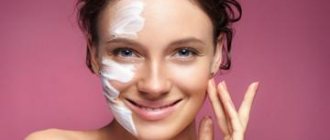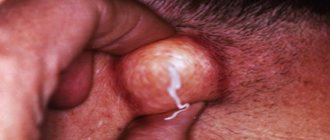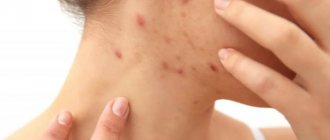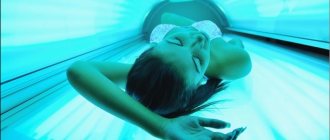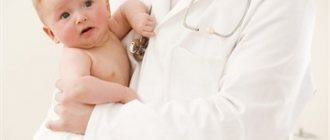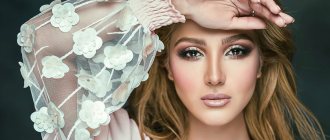Acne in teenagers is a common disease that begins in girls at about 12-14 years old, in boys a little later - at 14-15. Since the skin becomes covered with unpleasant-looking pimples during the disease, acne causes significant psychological suffering in a teenager and requires a very careful attitude from a doctor. Most often, acne in adolescents is associated with hormonal changes during puberty, or more precisely, with increased testosterone levels.
For a long time it was believed that the development of acne in adolescents could be influenced by diet, personal hygiene, and sex life. It has now been proven that these are minor factors, because teenage acne occurs due to disturbances in the functioning of the sebaceous glands due to an imbalance of sex hormones in the body.
In teenagers, the endocrine system produces excess androgen, a hormone that is responsible for the functioning of the sebaceous glands. As a result, there is more sebum than necessary, and it, together with particles of dirt and skin, clogs the ducts of the sebaceous glands. Bacteria begin to actively multiply in the follicles, inflammation develops, which manifests itself as teenage acne.
However, acne in adolescents can be not only a temporary reaction to the hormonal surge of puberty, but also a consequence of other diseases that affect hormonal levels. Therefore, in order to establish an accurate diagnosis and determine the cause of teenage acne, it is necessary to take a blood test for hormones.
Causes of acne in children and adolescents
Pimples occur when pores become clogged. What type of acne occurs depends on what is clogging the pores. Although scientists are still trying to figure out why some people's skin is more prone to developing acne, it's likely that hormones play a role. This explains why acne is so common among teenagers.
During puberty, hormones called androgens increase the size of the skin's oil glands. These glands begin to produce more sebum, which can clog your pores.
But acne can start before (or after) adolescence. About 20% of newborns suffer from neonatal acne, which usually appears between the second and fourth weeks of life. This type of acne goes away on its own without leaving any scars. It also does not increase the risk of developing severe acne later in life.
Some children develop infantile acne, which appears between 3 and 6 months of age. Baby acne can cause deep nodules and cysts, leading to permanent acne scarring. Fortunately, childhood acne is rare. Source: Modern concept of the etiopathogenesis of acne vulgaris. Isaeva M.S., Burieva Z.T. Avicenna Bulletin, 2010. p. 127-132 Pathogenetic approaches to the treatment of acne vulgaris. Khaldin A.A., Mareeva E.B., Skvortsova A.I. Russian Journal of Skin and Venereal Diseases, 2012. p. 34-37.
What causes acne and what causes it
While stress may not cause acne, it can make existing acne worse. Research shows that when stress increases, the severity of acne increases. Acne may get worse if teens:
- sleep too little;
- eat certain foods traditional to the Western diet;
- use oily cosmetics and skin care products.
Almost everyone experiences at least a few breakouts during their teenage years. It is impossible to predict who will develop more severe acne, but there is an increased risk if one or both parents (or other close blood relatives) have had severe acne that results in scarring.
Types of acne, formation mechanism and what they look like
Teenage acne on the face of adolescents can be of several types (or a combination of them). Source: Pathogenetic rationale for local acne therapy in adolescence. Mazitova L.P., Aslamazyan L.K., Kvachakhiya L.L., Namazova L.S. Pediatric pharmacology, 2008. pp. 94-97):
- whiteheads;
- black dots;
- acne;
- nodules, cysts, or both (deep and painful).
- Whiteheads . Removing whiteheads can lead to more whiteheads and acne scars, which is why dermatologists recommend treating whiteheads with an acne treatment rather than picking at them. Whiteheads form when excess oil and dead skin cells clog the pores. This causes white or flesh-colored pimples to appear. Medical name: closed comedon, which means “closed pore.”
- Black dots . Dermatologists recommend treating this type of acne with a retinoid, since squeezing the blackheads can cause infection or permanent scarring. This type of acne also develops when excess sebum and dead skin cells accumulate inside the pore. As the secretion accumulates, it expands the pores and you see blackheads. Many people mistakenly believe that a black spot is dirt. What you are actually seeing is a chemical reaction. When deposits inside the pore react with oxygen in the air, a black color appears. Medical name: open comedo, which means “open pore.”
- Sometimes excess oil, dead skin cells and bacteria get trapped in the pores. Bacteria, which are usually found on our skin, can multiply quickly in excess oil. As the pores become filled with bacteria, inflammation (swelling) develops and a pimple appears. Medical name: If a pimple contains pus, it is called a pustule . A pimple without pus is called a papule .
- Nodule or cyst . When the pores become filled with excess oil, dead skin cells and bacteria, causing inflammation (swelling) that penetrates deep into the skin, a lump or cyst forms. Because these rashes penetrate deep into the skin, they can be painful. The main difference between a nodule and a cyst is that the cyst contains pus. Because nodules do not contain pus, they feel firmer to the touch than cysts.
Myth #7: You need to diet to lower cholesterol.
If you have high cholesterol, you need to eat a healthy diet rather than go on a diet. Fatty foods and smoked foods, as well as spicy and fried foods, contribute to an increase in the amount of cholesterol in the blood. Nutrition for high cholesterol should include healthy foods that promote normal functioning of blood flow, heart and blood vessels (vegetables, fruits, greens).
How to lower cholesterol? You need to choose healthier fats (found in vegetable oils, nuts, sesame seeds) and monitor the total amount of fat consumed. Dietary fats in the total calorie content of dishes should be no more than 25–35%. You can’t completely give up consuming fats, which are necessary for the body to function properly.
What to eat if you have high cholesterol? A healthy and proper diet to reduce blood cholesterol involves partial or complete avoidance of saturated fats and trans fats. These fats are found in some meat and dairy products, chocolate, baked goods, confectionery, and processed foods. The harm of fatty foods affects the functioning of the liver and cardiovascular system.
A diet for high cholesterol includes consumption of:
- whole grain cereals (oatmeal and bran);
- fruits (apples, bananas, oranges, pears) and dried fruits (dried apricots, prunes);
- legumes (beans, lentils, chickpeas, peas).
Consequences of acne
Acne can cause more than just rashes. Some people believe that acne is a skin condition that eventually outgrows, but it can have a profound and lasting impact on one's life. Many people experience one or more of the following after acne appears.
Acne scars: When the breakout goes away, it leaves behind a permanent scar. Some scars cause indentations in the skin. The rest are gradually disappearing. It's impossible to predict who will develop scars after their acne goes away, but the following factors increase your risk:
- acne has been present for a long time because the teenager does not treat it or the treatment does not work;
- One or more close blood relatives have had acne in the family.
Dark spots on the skin: As acne breakouts fade, some people see the area where acne once was. This completely flat spot can be pink, red, purple, black or brown, and is often mistaken for a permanent acne scar. Source: Modern Treatments and Rehabilitation of Acne Vulgaris. Barinova A.N. Russian family doctor, 2022. p. 5-18.
Myth #5: If you don't eat fatty foods, gallstones will disappear on their own.
If you have gallstones, they will not go away if you give up fatty foods. Why do stones form in the gallbladder? Gallstones form due to an imbalance in the chemical composition of bile in the gallbladder. In most cases, due to an unhealthy diet, the cholesterol level in the bile becomes too high. Over time, excess cholesterol turns into stones.
British scientists estimate that more than 1 in 10 adults have gallstones, although not all people may experience symptoms. The risk of developing gallstones increases if you are diagnosed as overweight or obese. As people age, they may develop gallstones (usually after age 40 or older).
Signs of a gallstone:
- abdominal pain;
- nausea, vomiting;
- symptoms of jaundice (yellowish skin or eyes).
Can gallstones be cured? With timely treatment and switching to a healthy diet for gallstones, symptoms may disappear. If complications occur (acute pancreatitis or cholecystitis, cholangitis, gallbladder perforation), surgery to remove the gallbladder may be recommended.
What can you eat if you have gallstones? For adults and children, a diet for gallstones is mandatory. Must be included in the menu:
- fresh fruits and vegetables;
- whole grains (whole grain bread, brown rice, bran cereal);
- lean meat, poultry and fish;
- low-fat dairy products.
Diagnostics
If your teen has acne, a dermatologist can diagnose acne by looking at the breakouts. During your appointment, your dermatologist will also note what types of acne they are and where the breakouts appear on the skin. This will help your dermatologist create an effective treatment plan. Sometimes what looks like pimples is another problem. For example, some people mistake hidradenitis suppurativa, also called acneinversa, for everyday acne. Treatment for this condition is different from that for acne. Another disease that can be mistaken for acne is perioral dermatitis. This often causes rashes that look like pimples around the mouth. Whether your teen has stubborn acne or another condition, a dermatologist can accurately diagnose acne vulgaris and create a treatment plan tailored to your teen's needs.
Treatment of facial acne in teenagers
The appropriate acne treatment plan depends on many factors, including:
- type of acne;
- where acne appears on the skin;
- what treatments have already been tried;
- when the rash started;
- age;
- whether acne left dark spots or scars Source: Modern methods of treating acne in children. Nosacheva O.A., Torshkhoeva R.M., Namazova-Baranova L.S. Pediatric pharmacology, 2013. p. 23-30.
Your treatment plan may vary. But there are a number of drugs that are included in clinical guidelines for the treatment of acne. Effective treatment for facial acne in a teen may include retinoid medications, benzoyl peroxide, azelaic acid, or salicylic acid. An antibiotic may be prescribed and applied to the skin.
Nodules and cysts are more difficult to treat. Treatment may consist of prescription medications applied to the skin, antibiotics, and isotretinoin (a medication approved for the treatment of severe acne).
Sometimes additional laser or light therapy is needed: Research shows that laser and light devices can help clear up acne. This type of treatment works best in combination with other acne treatments.
Healthy Diet: Some studies show that eating a healthy diet can also help give you clearer skin.
Skin care is so important that without it you won't get the results you want. Even if you use an acne treatment correctly, if teens are too rough on their skin, new breakouts may appearSource: Combination Acne Therapy. Mamarasulov D.I., Yuldashev M.A., Moon A.V., Ismoilov B.B. Medicine: theory and practice, 2019. p. 342-343.
Steam baths
Steam baths are used to cleanse the skin. The steaming effect allows you to open the pores, after which it is easy to remove accumulated dirt and sebum from them. They also help remove the dead skin layer.
Steam facials help enhance the effect of subsequent procedures and cosmetics, as they penetrate much deeper into the epidermis. Steaming promotes the resorption of subcutaneous seals, therefore it is recommended for cystic acne.
It is very simple to do this procedure at home. You need to boil water, then tilt your face over the steam, covering yourself with a towel. To enhance the effect, anti-inflammatory herbs are added to the water. Chamomile and calendula are especially popular. It is recommended to use steam baths 1-2 times a week.
Prevention
Do not wash your face with soap or use rough scrubs too often. Acne is not caused by dirt. Two gentle washes a day are enough. Exfoliating your skin too often can cause irritation and dryness of the skin, which causes the glands to produce more oil, which increases the likelihood of acne.
Use non-comedogenic products (those that do not clog pores) on your face.
Do not press on the spots, as this can drive bacteria deeper into the skin. This can lead to more inflammation and permanent scarring.
Sources:
- Modern concept of etiopathogenesis of acne vulgaris. Isaeva M.S., Burieva Z.T. Avicenna Bulletin, 2010. p. 127-132
- Pathogenetic approaches to the treatment of acne vulgaris. Khaldin A.A., Mareeva E.B., Skvortsova A.I. Russian Journal of Skin and Venereal Diseases, 2012. p. 34-37
- Modern methods of treatment and rehabilitation of patients with acne vulgaris. Barinova A.N. Russian family doctor, 2022. p. 5-18
- Pathogenetic rationale for local therapy for acne in adolescence. Mazitova L.P., Aslamazyan L.K., Kvachakhiya L.L., Namazova L.S. Pediatric pharmacology, 2008. p. 94-97
- Modern methods of treating acne in children. Nosacheva O.A., Torshkhoeva R.M., Namazova-Baranova L.S. Pediatric pharmacology, 2013. p. 23-30
- Combination therapy for acne. Mamarasulov D.I., Yuldashev M.A., Moon A.V., Ismoilov B.B. Medicine: theory and practice, 2022. p. 342-343
The information in this article is provided for reference purposes and does not replace advice from a qualified professional. Don't self-medicate! At the first signs of illness, you should consult a doctor.
Prices
| Name of service (price list incomplete) | Price |
| Appointment (examination, consultation) with a dermatovenerologist, primary, therapeutic and diagnostic, outpatient | 1950 rub. |
| Consultation (interpretation) with analyzes from third parties | 2250 rub. |
| Prescription of treatment regimen (for up to 1 month) | 1800 rub. |
| Prescription of treatment regimen (for a period of 1 month) | 2700 rub. |
| Consultation with a candidate of medical sciences | 2500 rub. |
| Dermatoscopy 1 element | 700 rub. |
| Setting up functional tests | 190 rub. |
| Excision/removal of cutaneous/subcutaneous elements and formations (1 element) | 2550 rub. |
| Removal of milia of one unit using electrocoagulation | 350 rub. |
Homemade lotions for washing and cleansing skin from acne
1. Bay lotion.
Required components:
- Bay leaf.
- Vodka or alcohol.
Preparation:
Finely chop the bay leaf, place it in a glass bowl, then pour in vodka. Leave to infuse in a dark place for 1 month. Use daily, gently rubbing your face.
2. Cucumber lotion.
Required components:
- Cucumber
- Vodka or alcohol
Preparation:
Turn the cucumber into a pulp, then pour in vodka. Leave to infuse for 2 weeks. Use lotion 1-2 times a day. After use, it is recommended to apply moisturizer.
3. Sage and rose lotion.
Required components:
- Sage.
- Rose.
- Alcohol or vodka.
Preparation:
Cut sage and rose in equal proportions, then pour in vodka. The lotion should infuse for 1.5 weeks. Daily use is not recommended. It is better to apply once every 2 days.

